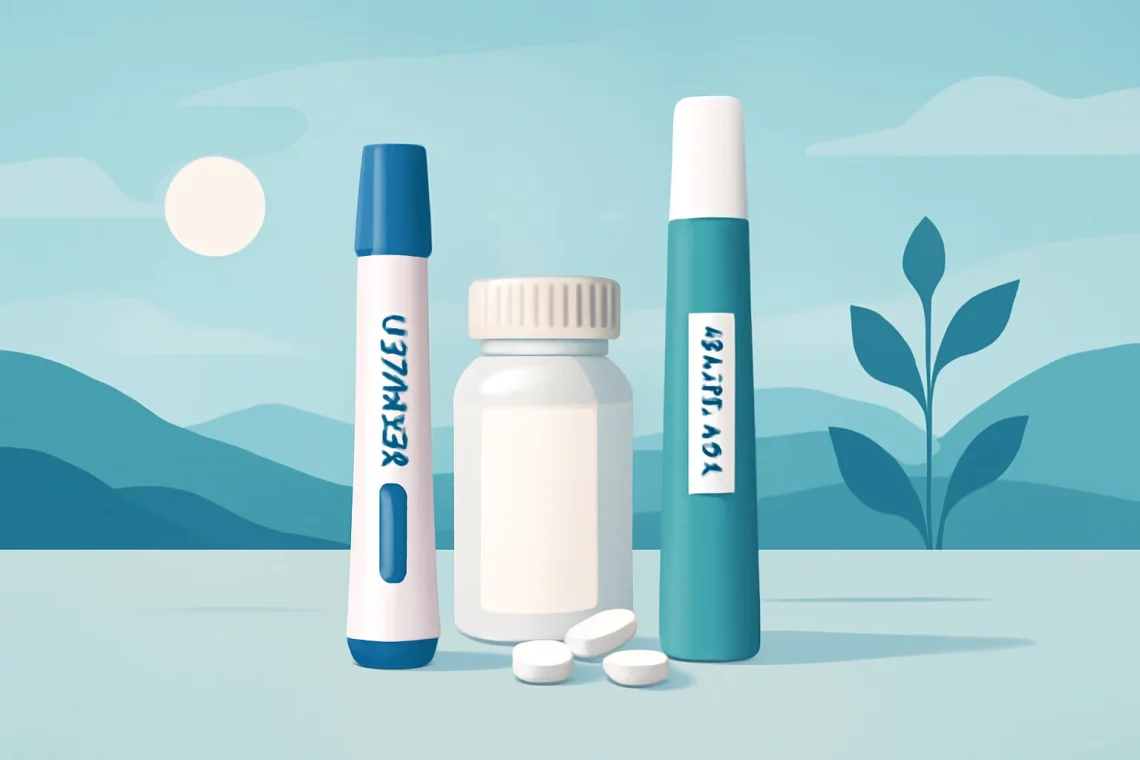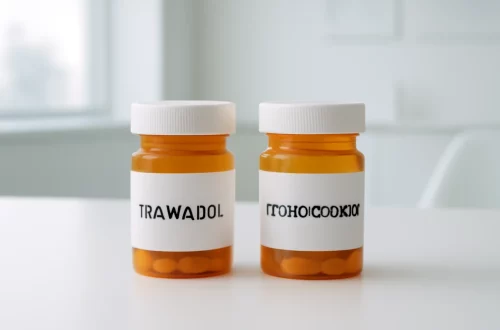
Zepbound vs Trulicity: A Comprehensive Comparison of Diabetes Medications
In recent years, the management of diabetes has evolved significantly, with the introduction of various medications aimed at improving blood sugar control. Among these medications, Zepbound and Trulicity have emerged as popular choices for patients and healthcare providers. Both drugs belong to the class of glucagon-like peptide-1 (GLP-1) receptor agonists, which have shown effectiveness in managing type 2 diabetes. The increasing prevalence of diabetes worldwide has led to a surge in interest surrounding these medications, as individuals seek effective and efficient solutions to maintain their health and well-being.
Understanding the differences and similarities between Zepbound and Trulicity can help patients and caregivers make informed decisions about their diabetes management options. As individuals strive for optimal glycemic control, the choice of medication can be a critical factor in achieving their health goals. Many factors contribute to this decision, including efficacy, side effects, dosing schedules, and overall patient experience. As the conversation around diabetes treatment continues to evolve, it is essential to explore the nuances of these two medications to determine which might be the best fit for individual needs.
Understanding Zepbound: Mechanism and Benefits
Zepbound, a relatively newer addition to the GLP-1 receptor agonist family, has garnered attention for its unique mechanism of action and the benefits it offers to patients with type 2 diabetes. This medication works by mimicking the natural hormone GLP-1, which plays a crucial role in glucose metabolism. When administered, Zepbound stimulates insulin secretion in response to food intake, reduces glucagon secretion, and slows gastric emptying. This multifaceted approach helps to lower blood sugar levels effectively.
One of the standout features of Zepbound is its potential for weight loss, which is particularly beneficial for individuals with type 2 diabetes who often struggle with obesity. Clinical studies have shown that patients using Zepbound not only experience better glycemic control but also tend to lose weight compared to those on other diabetes medications. This dual benefit addresses two critical components of diabetes management: blood sugar levels and body weight.
Additionally, Zepbound has demonstrated a favorable safety profile, with many patients tolerating the medication well. Common side effects may include gastrointestinal issues such as nausea or diarrhea, but these symptoms often improve over time. The once-weekly injection schedule is another advantage, as it provides convenience for patients who prefer not to manage daily medication regimens.
Overall, Zepbound represents an innovative option for those looking to manage their diabetes more effectively while also addressing weight concerns. However, as with any medication, it’s essential for patients to consult with their healthcare providers to determine if Zepbound is the right choice for their specific health circumstances.
Exploring Trulicity: Efficacy and Patient Experience
Trulicity, another well-established GLP-1 receptor agonist, has been a cornerstone in diabetes management for several years. Like Zepbound, Trulicity works by enhancing insulin secretion and lowering glucagon levels, leading to improved blood sugar control. However, it has its unique features that set it apart in the competitive landscape of diabetes medications.
One notable aspect of Trulicity is its proven efficacy in clinical trials. Research has consistently shown that patients using Trulicity experience significant reductions in hemoglobin A1c levels, a critical marker of long-term blood sugar control. This efficacy is accompanied by the potential for weight loss, making Trulicity an attractive option for those who need to manage both diabetes and obesity.
Trulicity also offers a user-friendly administration process, as it is delivered via a pre-filled pen that allows for easy self-injection. Patients appreciate the simplicity of the once-weekly dosing schedule, which aligns well with busy lifestyles. Moreover, Trulicity has a wide range of dosing options, enabling healthcare providers to tailor treatment to individual patient needs.
While Trulicity is generally well-tolerated, some patients may experience side effects such as nausea, vomiting, or diarrhea. These gastrointestinal symptoms are typically mild to moderate and tend to diminish over time. Importantly, Trulicity has a strong safety record, making it a reliable choice for many individuals managing type 2 diabetes.
In summary, Trulicity has proven to be an effective and patient-friendly option for diabetes management. As with any medication, it’s imperative for patients to discuss their treatment options with their healthcare providers to ensure they choose the most suitable medication for their unique circumstances.
Comparing Zepbound and Trulicity: Key Differences
When comparing Zepbound and Trulicity, several key differences emerge that can influence a patient’s choice of medication. While both are GLP-1 receptor agonists with similar mechanisms of action, the nuances in their formulations, dosing, and patient experiences can play a significant role in treatment decisions.
One critical difference lies in their chemical composition. Zepbound has been engineered with specific modifications that may enhance its efficacy and tolerability. This can lead to differences in how patients respond to each medication. Some patients may find Zepbound to be more effective at controlling their blood sugar levels, while others may have a better experience with Trulicity.
Dosing frequency is another essential factor to consider. Both medications are administered once weekly, which is a significant advantage over daily medications. However, the specific injection technique and device usability can differ, impacting patient preference. Some individuals may prefer the design and ease of use of one delivery device over the other, which can influence adherence to the treatment regimen.
Additionally, the side effect profiles may vary between the two medications. Although both can cause gastrointestinal issues, the severity and duration of these side effects may differ for individual patients. Understanding how each medication affects the body is crucial for making an informed decision.
Ultimately, the choice between Zepbound and Trulicity should be based on a comprehensive evaluation of individual health needs, preferences, and responses to each medication. Consulting with a healthcare provider is essential to navigate these options effectively.
Making an Informed Decision: Factors to Consider
Choosing the right medication for managing type 2 diabetes is a personal decision that should be made in consultation with a healthcare provider. Several factors play a crucial role in this decision-making process, and understanding them can help patients feel more empowered in their diabetes management journey.
First and foremost, individual health conditions and medical history are paramount. Patients with certain comorbidities may respond differently to Zepbound or Trulicity, making it essential to consider overall health when selecting a medication. For instance, individuals with a history of gastrointestinal issues may need to weigh the potential side effects more carefully.
Another critical factor is lifestyle and adherence to treatment. Patients should evaluate their daily routines and preferences regarding medication administration. The convenience of a once-weekly injection may appeal to those with busy schedules, but the ease of use of the delivery device is also important. Discussing these aspects with a healthcare provider can help identify which medication aligns better with a patient’s lifestyle.
Cost and insurance coverage are also significant considerations. The financial aspect of diabetes management can be a barrier for many patients, and it’s essential to explore these factors when making a decision. Understanding the potential out-of-pocket costs for Zepbound and Trulicity, as well as any available patient assistance programs, can be valuable.
Finally, patient preferences and experiences should not be underestimated. Open communication with healthcare providers about any concerns or preferences regarding medications can lead to a more tailored treatment plan that meets the patient’s unique needs.
In conclusion, while both Zepbound and Trulicity offer promising options for managing type 2 diabetes, making an informed decision involves considering various factors unique to each patient. Collaboration with healthcare providers is key to finding the best fit for individual health goals.
**Disclaimer:** This article is for informational purposes only and does not constitute medical advice. Always consult a healthcare professional for medical concerns or treatment options.




